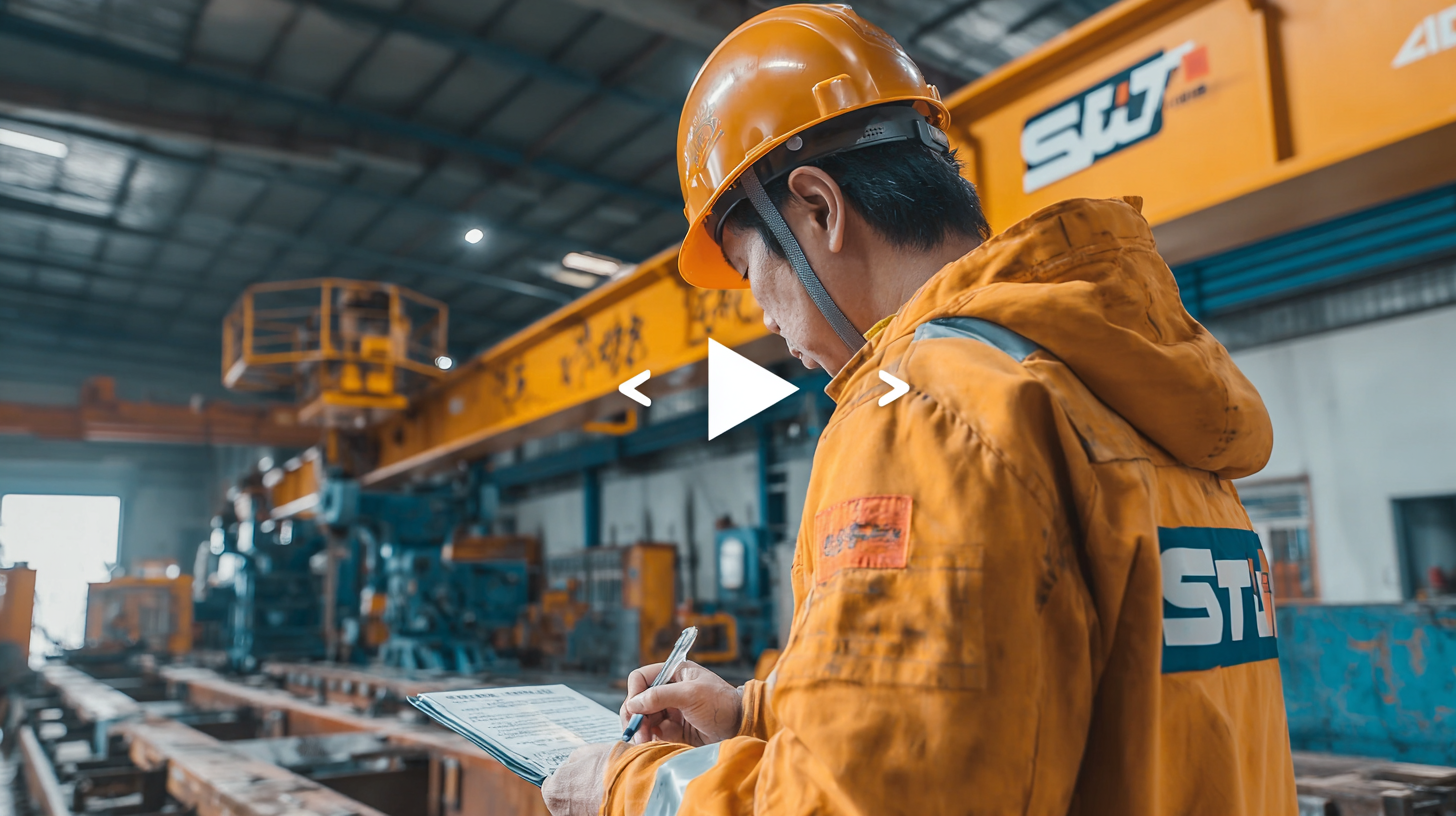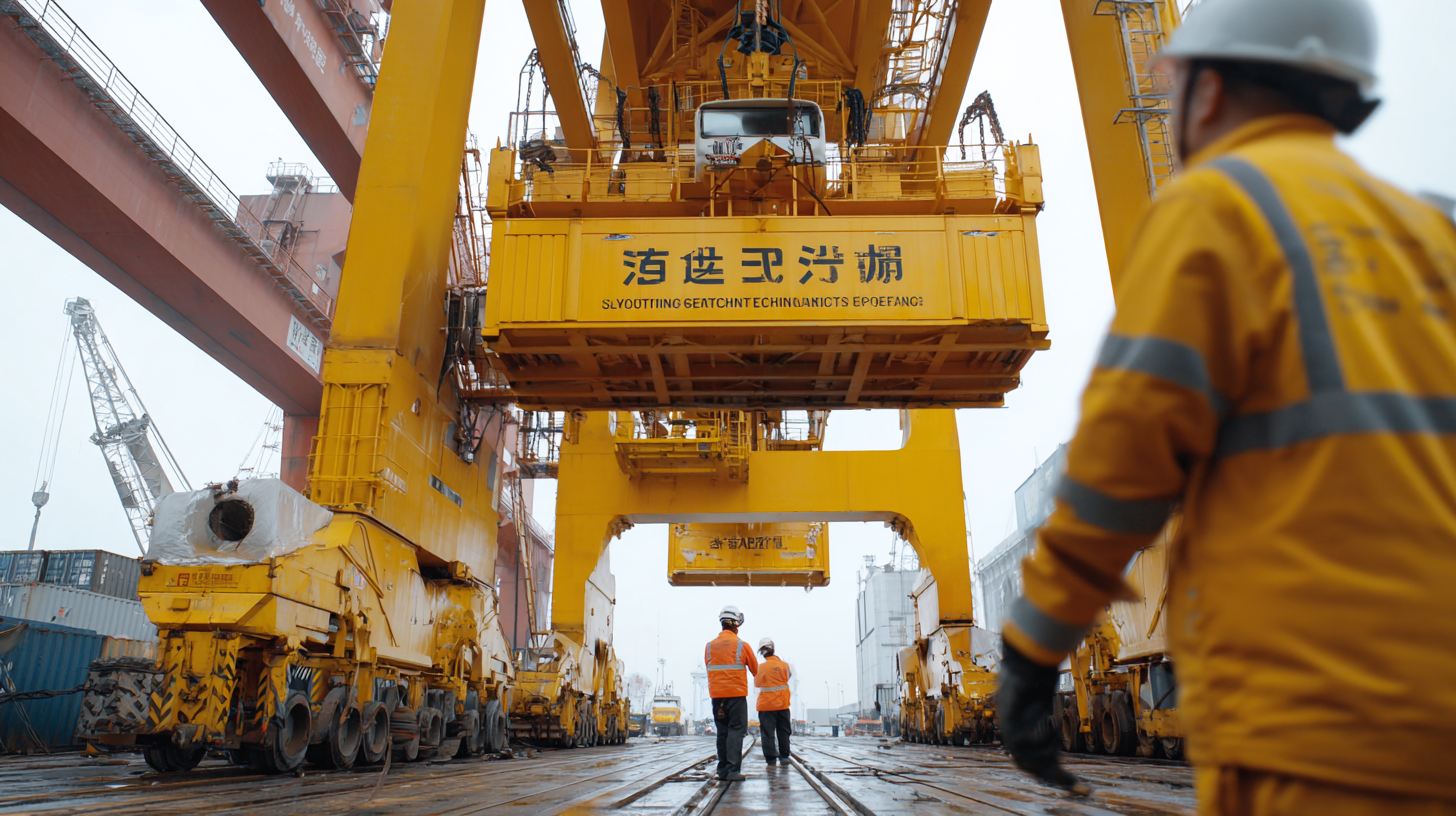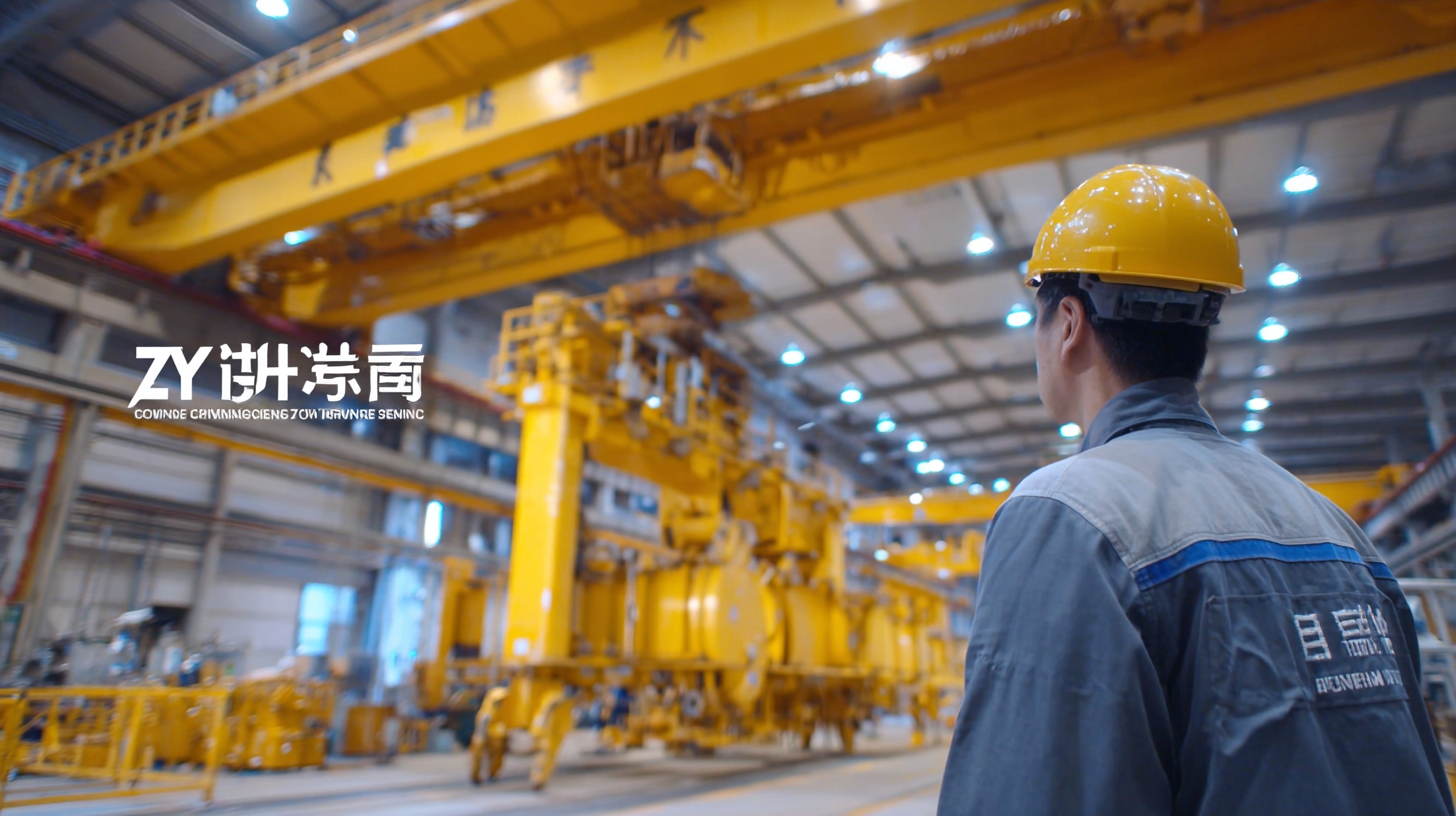Elevating Global Standards: The Excellence of Chinese-Made Lifting Equipment Inspection
In the rapidly advancing sector of industrial safety, Lifting Equipment Inspection has emerged as a critical component in ensuring operational efficiency and preventing accidents. According to a report from the International Organization for Standardization (ISO), improper inspection of lifting equipment contributes to over 50% of workplace incidents related to material handling. As the demand for high-quality lifting solutions continues to rise globally, Chinese manufacturers have stepped up to elevate these standards significantly. Recent data shows that the Chinese lifting equipment market is projected to reach $12 billion by 2025, highlighting the country’s pivotal role in shaping industry benchmarks.

This blog delves into the exemplary practices of Chinese-made lifting equipment inspection, showcasing how rigorous standards and innovative technologies are transforming the landscape of industrial safety worldwide.
Elevating Quality: The Rise of Chinese Lifting Equipment in Global Markets
The lifting equipment sector has witnessed a remarkable transformation in recent years, particularly with the emergence of Chinese-made products dominating global markets. Recent reports from the International Organization of Standardization (ISO) indicate that Chinese manufacturers now account for approximately 30% of the global lifting equipment market, a significant increase from just 15% five years ago. This surge can be attributed to a combination of innovative technology, competitive pricing, and adherence to international quality standards, which have collectively enhanced China's reputation in the industry.
Moreover, the growing demand for efficient and reliable lifting solutions in various sectors, including construction and logistics, has paved the way for Chinese companies to expand their reach. According to a report by Transparency Market Research, the global lifting equipment market is projected to reach $60 billion by 2026, with Chinese brands expected to contribute over 40% of this growth, driven by advancements in automation and smart technologies. As these Chinese manufacturers prioritize high-quality standards and invest in rigorous inspection protocols, they are not only improving their own product reliability but also elevating the expectations for lifting equipment worldwide.

The Importance of Rigorous Inspection Standards for Safety and Reliability
In the realm of lifting equipment, safety and reliability are non-negotiable pillars that uphold operational integrity across various industries. The rigorous inspection standards set forth for Chinese-made lifting equipment play a crucial role in mitigating risks associated with machinery failures. These inspections ensure that every piece of equipment meets not only local regulations but also international safety benchmarks, providing clients with confidence that their operations are secure.
The commitment to excellence in inspection processes involves comprehensive evaluations that assess structural integrity, load capacity, and wear and tear. By adhering to stringent protocols, manufacturers can identify potential issues before they escalate, thus preventing accidents and enhancing productivity. The meticulous nature of these inspections emphasizes the importance of investing in safety measures, ultimately fostering a culture of responsibility in the workplace. With an unwavering focus on quality control, the lifting equipment industry is not only elevating global standards but also prioritizing the well-being of workers around the world.
Elevating Global Standards: The Excellence of Chinese-Made Lifting Equipment Inspection
| Inspection Criteria | Standard Compliance | Inspection Frequency | Safety Rating | Last Inspection Date |
|---|---|---|---|---|
| Load Capacity Verification | ISO 9001 | Annual | A | 2023-05-15 |
| Visual Inspection for Wear | OSHA | Semi-Annual | B | 2023-08-01 |
| Functional Test | EN 14502-1 | Annual | A+ | 2023-09-12 |
| Safety Feature Check | ASME B30.20 | Quarterly | A | 2023-09-20 |
| Documentation Review | ISO 14001 | Annual | A | 2023-04-25 |
Innovative Technologies in Lifting Equipment Inspection: A Chinese Perspective
In the realm of lifting equipment inspection, China is setting new benchmarks through innovative technologies that enhance operational safety and efficiency. According to the International Organization for Standardization (ISO), the global lifting equipment market is projected to reach $69 billion by 2027, with substantial contributions from Chinese manufacturers. These companies are integrating advanced technologies such as IoT (Internet of Things) sensors and AI-based analytics to streamline inspection processes. This not only ensures compliance with international safety standards but also boosts productivity by reducing downtime.
Tip: Regularly updating your inspection protocols by incorporating technology can lead to significant operational gains. For instance, utilizing digital inspection tools can reduce inspection time by up to 30%, thereby allowing for quicker turnarounds on lifting projects.

Moreover, the focus on data-driven insights is revolutionizing how inspections are conducted in China. By leveraging big data, organizations can predict equipment failures before they occur, thereby enhancing safety measures and extending the lifecycle of the equipment. A recent report from the Asia-Pacific Lift Market indicates that countries like China are investing an average of 15% of their revenue back into research and development for lifting technologies.
Tip: Ensure your lifting equipment is equipped with smart monitoring devices; they can provide real-time data that aids in preventative maintenance, thereby minimizing costly repairs.
Building Global Partnerships: How Chinese Manufacturers Ensure Quality Assurance
China's commitment to quality assurance in manufacturing extends beyond its borders, particularly in the realm of lifting equipment inspection. As global trade dynamics shift, with the U.S. adopting protectionist policies, China is seizing the opportunity to foster international collaborations and enhance its reputation as a quality-driven partner. Chinese manufacturers are focused on adhering to global standards, ensuring that their products not only meet safety and operational requirements but also surpass international competitors in reliability and performance.
The strategic emphasis on quality assurance is evident as Chinese firms integrate advanced technologies and innovative practices into their production processes. In industries such as electric vehicles, where China is a leader, the same rigorous quality metrics apply. By leveraging their extensive supply chains and fostering partnerships with global entities, Chinese manufacturers are adeptly positioning themselves to meet global demands while maintaining excellence in safety and efficiency. As the landscape of international trade evolves, China’s approach exemplifies how building robust partnerships can lead to improved standards and mutual growth.
Success Stories: Chinese-Made Lifting Equipment in International Projects
Chinese-made lifting equipment has increasingly garnered attention in international projects, standing as a testament to the country's engineering prowess and commitment to quality. Numerous success stories highlight how this equipment has become integral to large-scale construction endeavors across the globe. For instance, in the Middle East, Chinese-manufactured cranes and hoists played crucial roles in the rapid construction of skyscrapers and infrastructure projects, demonstrating their ability to meet stringent safety and performance standards.
One of the most remarkable examples is the use of Chinese lifting equipment in the construction of major hydropower plants in Africa. The reliability and efficiency of these machines have significantly improved project timelines, enabling teams to complete complex tasks in challenging environments. Furthermore, the adaptability of Chinese technology to local conditions has been pivotal, fostering partnerships with local firms and contributing to knowledge transfer that enhances regional expertise in lifting operations.
These success stories not only highlight the excellence of Chinese manufacturing but also underscore the vital role of innovative lifting solutions in advancing global infrastructure development.
